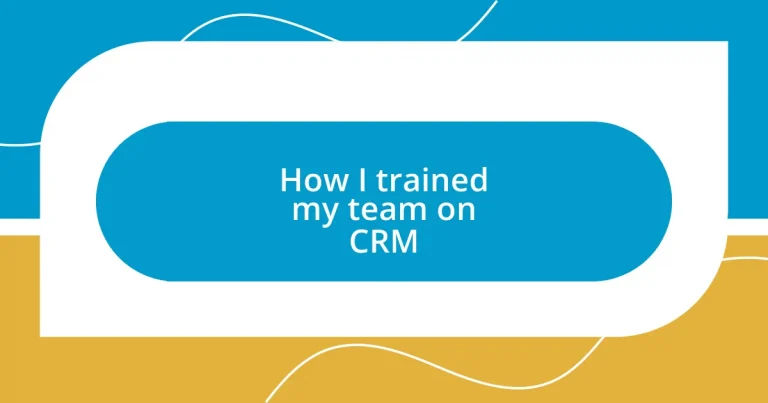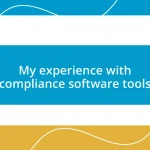Key takeaways:
- Effective CRM training requires clear objectives and involving team members in goal-setting to enhance engagement and ownership.
- Hands-on training and practical applications, like role-playing and real-time demonstrations, foster collaboration, confidence, and a deeper understanding of the CRM system.
- Continuous feedback is essential for improvement; creating safe spaces for open dialogue can lead to valuable insights and adaptations in training programs.
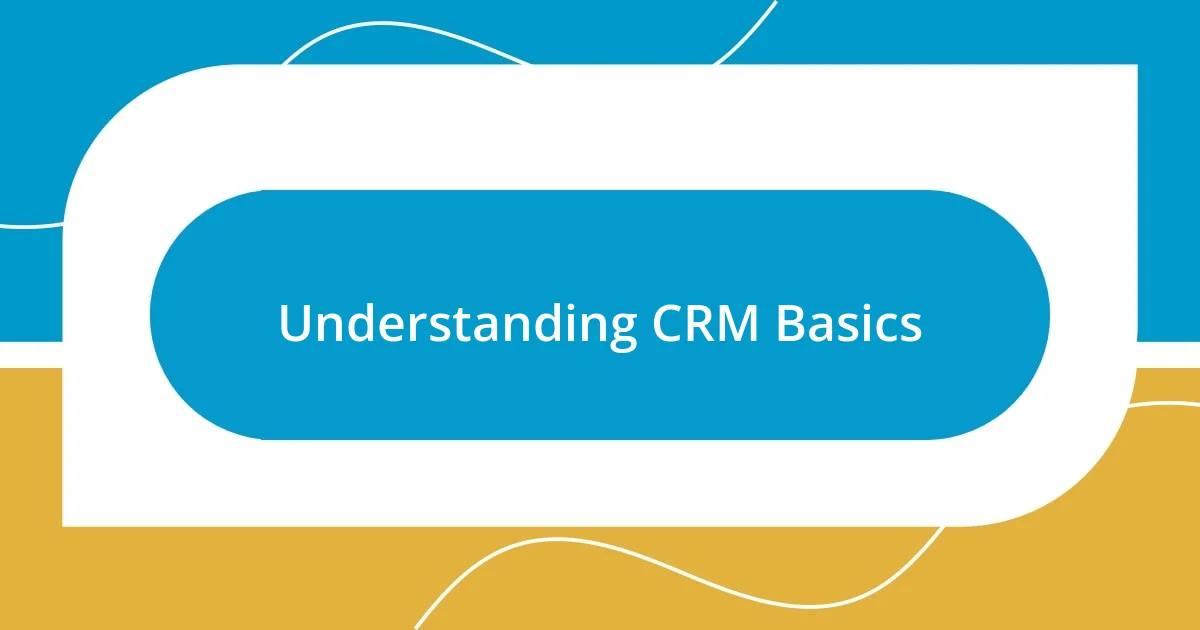
Understanding CRM Basics
Customer Relationship Management (CRM) systems serve as the backbone of a business’s interactions with customers. Imagine managing a growing list of contacts without the chaos of spreadsheets or sticky notes—it’s liberating! My first experience with CRM was like discovering a new world where data flowed seamlessly, allowing us to understand our clients’ needs better.
At its core, CRM is about building relationships. Think about your most valued customer—what do you know about their preferences, their struggles, and their goals? When I began using CRM tools, I realized they helped us not only track transactions but also personalize our approach, making each client feel valued and understood. This emotional connection translates to loyalty, which is priceless.
Additionally, understanding the various CRM features, like automation and analytics, can feel overwhelming. Have you ever found yourself wishing for more hours in a day? I remember feeling that way before we embraced CRM. Automation helped our team save time on repetitive tasks, allowing us to focus more on innovation and client interaction. It’s truly a game changer that transforms how you view customer interactions.
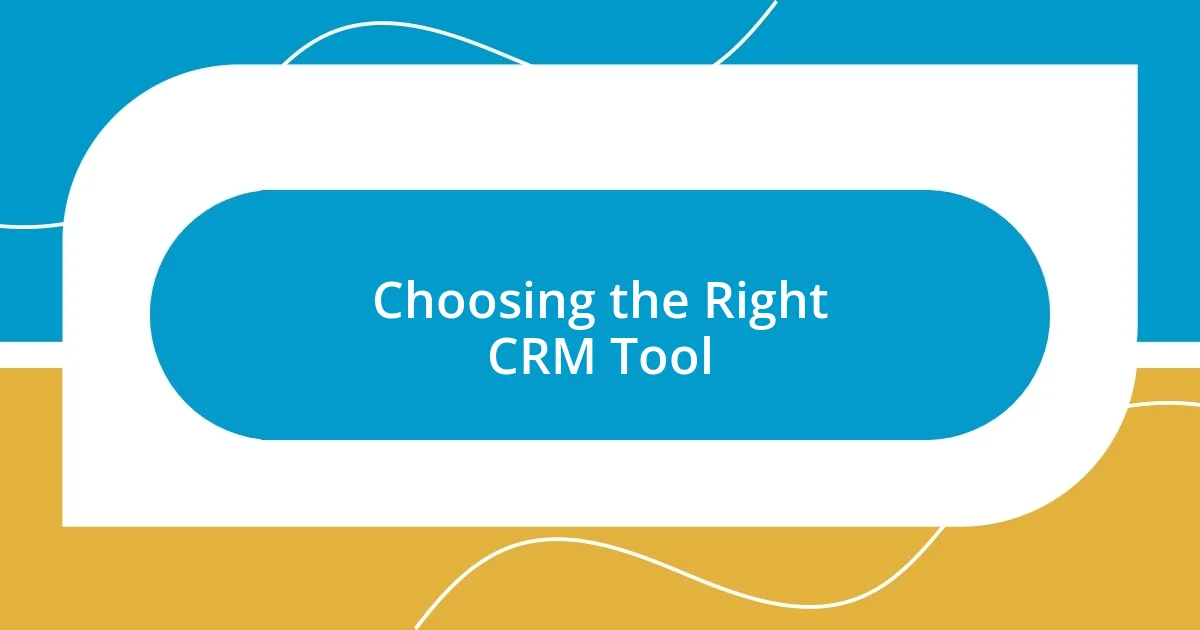
Choosing the Right CRM Tool
Choosing the right CRM tool can feel like navigating a maze. I vividly remember sifting through countless options, trying to find one that not only fit our needs but also felt intuitive for the team. It’s crucial to select a system that aligns with your business goals and the unique workflows of your team. If the tool is too complex, you risk frustration and underutilization, which defeats the purpose entirely.
When evaluating CRM tools, consider the following factors to guide your decision:
- User-Friendliness: Can your team adapt quickly to the software?
- Customization: Does it allow you to tailor features to your specific needs?
- Integration: Will it seamlessly connect with your existing tools, like email and marketing platforms?
- Scalability: Can it grow with your business?
- Support and Training: Is there adequate customer service and resources available for your team?
By focusing on these criteria, I’ve found it easier to pinpoint the right tool that not only enhances productivity but also invigorates the team’s spirit.
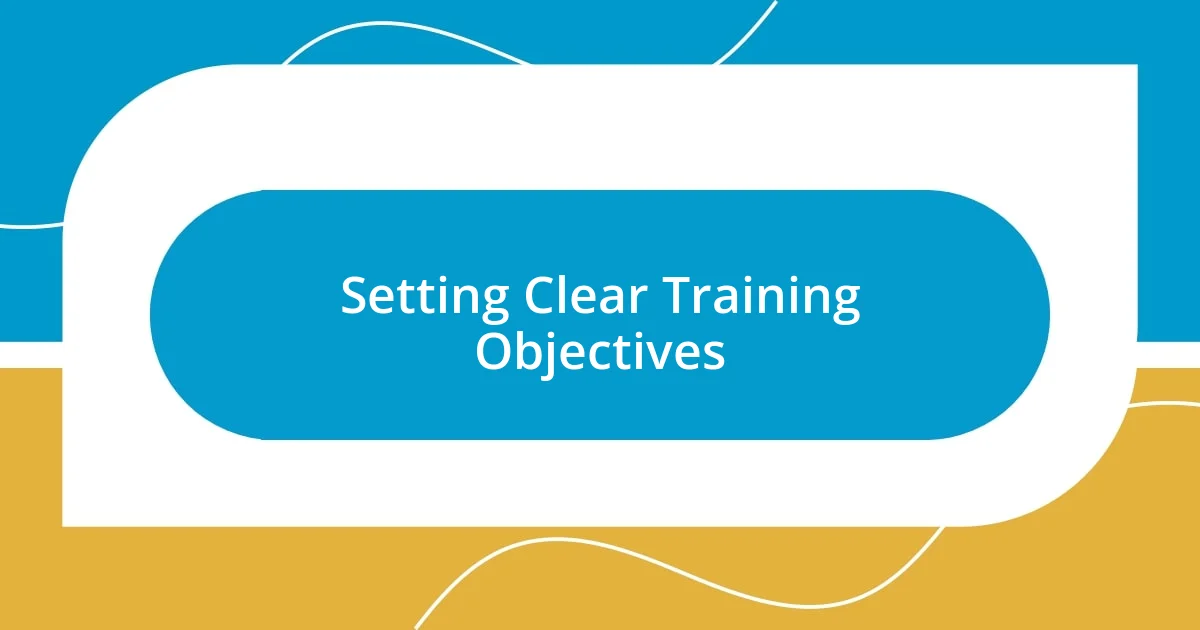
Setting Clear Training Objectives
Setting clear training objectives is essential for effective CRM training. From my experience, knowing exactly what you want your team to achieve can significantly streamline the learning process. I remember setting specific goals like improving data entry accuracy or increasing response times to customer inquiries. With well-defined objectives, we could measure our progress and pinpoint areas needing more focus, ultimately driving our success.
Additionally, involving the team in the objective-setting process can foster a greater sense of ownership. I found that when team members contributed to the goals, they felt more invested in the training and were eager to tackle challenges. This collaborative approach not only improved motivation but also enhanced our team dynamics, making the learning experience more enjoyable and productive.
Lastly, it’s important to keep objectives flexible to adapt to the changing needs of your team and the CRM system itself. During our training, I realized that some goals required adjustment based on how the team was progressing. This adaptability allowed us to remain focused and ensure that we weren’t just ticking boxes but genuinely learning and applying new skills to our CRM utilization.
| Objective Type | Description |
|---|---|
| Performance | Improve data entry accuracy from 85% to 95% within three months. |
| Engagement | Increase team participation in training sessions by 20% over the course of the program. |
| Knowledge | Equip team members to handle customer inquiries using CRM tools independently. |
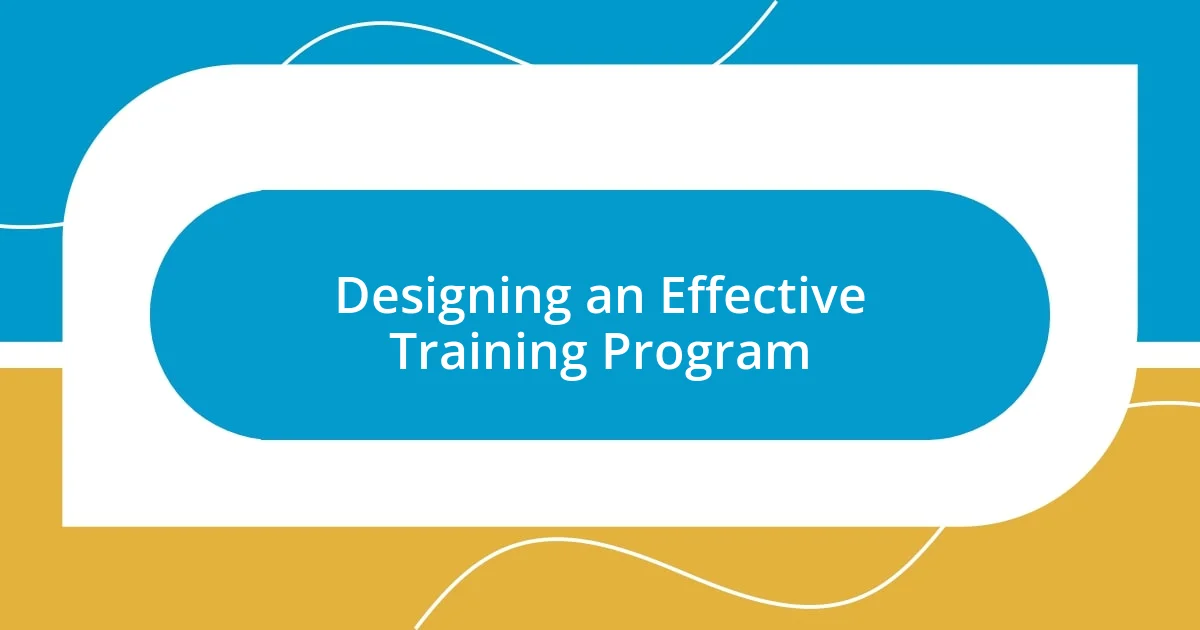
Designing an Effective Training Program
Designing an effective training program starts with understanding the unique needs of your team. I recall feeling overwhelmed while drafting our training outline, but I quickly realized the importance of tailoring content to fit different learning styles—some team members thrived on hands-on activities, while others preferred more theoretical approaches. How often do we underestimate the diversity within our teams? By recognizing these differences, I was able to create a more engaging and effective program, ensuring no one was left behind.
Another key component was incorporating ongoing feedback loops during the training sessions. I remember implementing quick surveys after each session to gauge engagement and comprehension. This simple step not only made the team feel heard but also provided invaluable insights into what was working and what wasn’t. It turned the program into a living entity that evolved with us. I often ask myself, how can we truly grow if we’re not open to change?
In addition, I prioritized real-life scenarios and role-playing exercises as part of our curriculum. These practical components allowed the team to see the CRM in action, making it easier to relate to our everyday tasks. I vividly recall our first role-play session; there was a palpable shift in energy as my teammates started applying their knowledge in a safe environment. It highlighted for me the importance of experiential learning—how can we expect our teams to become proficient without giving them the chance to practice under a guided, low-stakes setting?
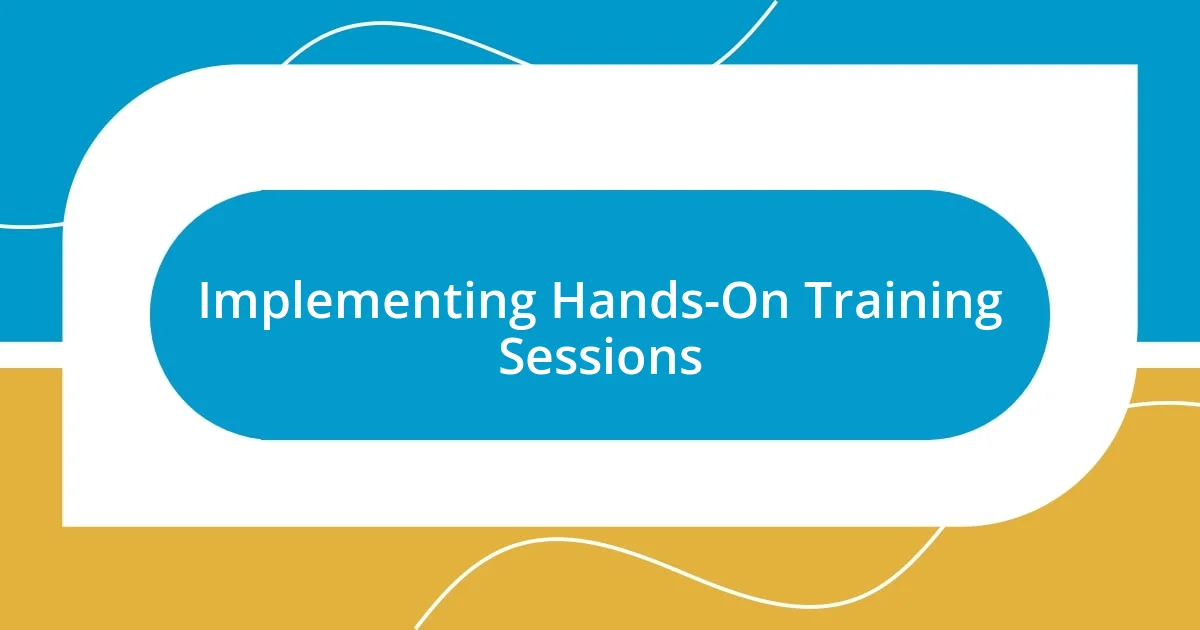
Implementing Hands-On Training Sessions
Implementing hands-on training sessions made a huge difference in how my team learned the CRM system. I vividly remember organizing a workshop where everyone was on laptops, navigating through the system together. There was something magical about seeing my team engage with real data rather than just theory—it turned learning into a shared adventure rather than a chore.
One particularly memorable session involved a live demonstration where I acted as a customer while my team members played their respective roles. Watching them think on their feet and engage with the CRM in a realistic scenario was enlightening. It struck me how necessary it is to offer these practical experiences; they not only boosted confidence but also encouraged teamwork. After all, isn’t it true that we learn best by doing, rather than just listening?
In another instance, I found that pairing more experienced team members with those who were less familiar with the system created a supportive atmosphere. It was heartwarming to see how quickly bonds formed during these sessions, as everyone worked through challenges together. Reflecting on that, I realized that hands-on training isn’t just about mastering software; it’s also about building a culture of collaboration and support within the team. How can we expect our teams to flourish if they don’t feel comfortable learning alongside each other?
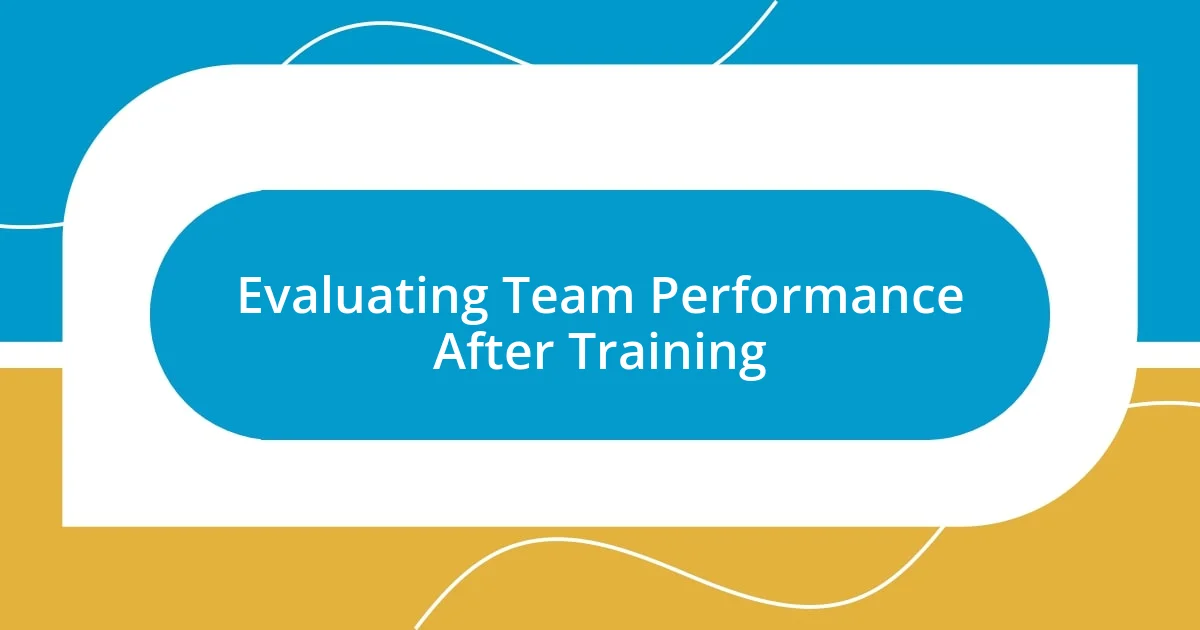
Evaluating Team Performance After Training
Evaluating team performance after training is essential to measure the effectiveness of what we’ve taught. I remember my first attempt at this, where I felt anxious about how my team would respond. We decided to use role-playing exercises in a real-world sales scenario to see how effectively they utilized the CRM. The resulting discussions not only revealed their strengths and areas needing improvement but also fostered a supportive atmosphere where everyone felt safe to share and learn together.
I implemented a follow-up survey that focused on specific CRM functionalities. To my surprise, several team members openly shared their struggles, which was eye-opening for me. It hit me that true evaluation goes beyond metrics; it requires fostering an open dialogue where team members feel comfortable expressing their challenges. Have you ever wondered how many insights you might miss if you don’t create that safe space for feedback?
Lastly, tracking performance through metrics like customer interactions and task completion rates was critical. I vividly recall comparing pre- and post-training data, and the improvements were staggering. This quantitative analysis helped me to identify who had excelled and who needed additional support. Reflecting on that, I realized that a blend of qualitative insights and quantitative data paints a complete picture of performance. How can we expect effective training without continuously assessing the impact it has on the team’s growth?
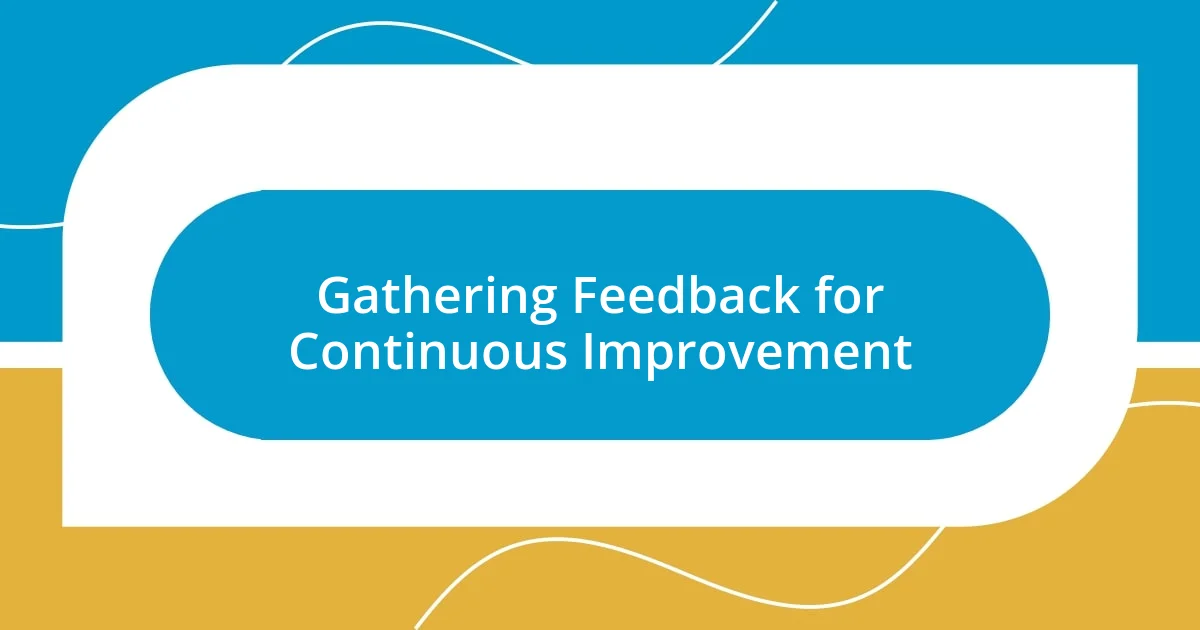
Gathering Feedback for Continuous Improvement
Gathering feedback is a vital part of fostering continuous improvement within my team. After my initial rounds of CRM training, I set up regular feedback sessions to encourage open communication. It was enlightening to hear my team share their experiences—some felt confident navigating the system, while others struggled with specific features. This wasn’t just a learning moment; it felt like peering into their thought processes, and I realized that creating a space for open dialogue wasn’t merely a checkbox—it was essential for our collective growth.
During these feedback sessions, I discovered that a simple question like “What’s one thing you wish had been covered more thoroughly?” could spark genuine conversations. One day, a team member shared her frustrations with a certain report generation function, which seemed to resonate with several others. The emotion in her voice reminded me how critical it is to listen deeply; often, the best insights come from those who feel the most challenged. Have you ever felt a similar breakthrough when someone voiced a concern you thought was minor?
I also made it a point to incorporate feedback into future training plans. I quickly learned that the more I adjusted based on their suggestions, the more engaged my team became. I remember the palpable excitement when they saw their input translate into actual changes in our training approach. This two-way street of communication not only enhanced the learning experience but also bolstered a sense of ownership among my team. In reflecting on this, I can’t help but wonder—how can we ever evolve if we don’t prioritize the voices of those doing the work?












